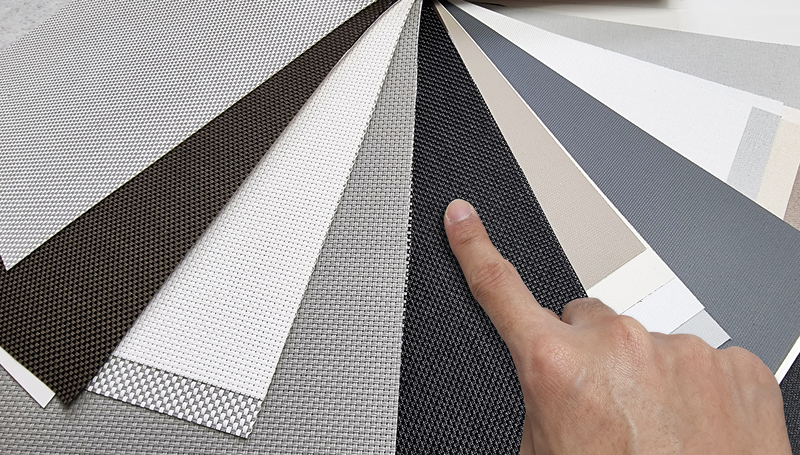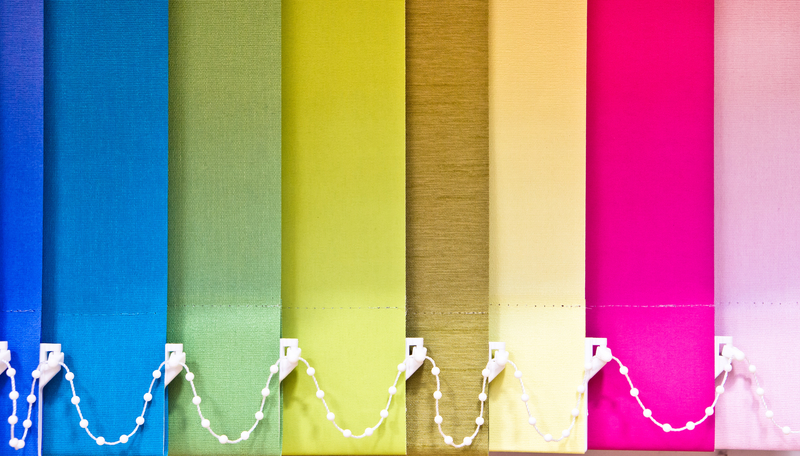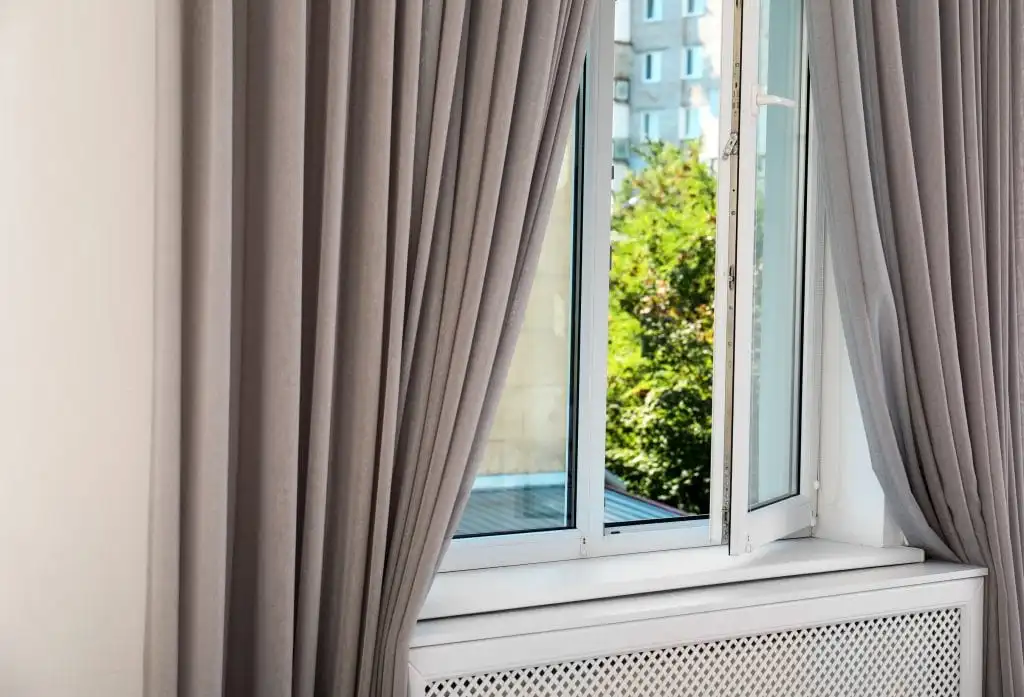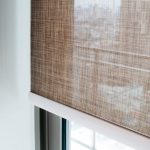Guide to Choosing the Perfect Colour Blinds for Your Home
When it comes to interior design, the devil is in the details. One often overlooked yet crucial element is the colour of your window blinds. Moreover, blinds serve a dual purpose in any home: they provide privacy and light control while also contributing significantly to the overall aesthetic. The colour of your blinds can dramatically impact the mood and feel of a space, making it essential to choose wisely.
Whether you’re aiming for a cosy, intimate atmosphere or a bright, airy feel, the colour of your blinds plays a pivotal role in achieving your desired effect.
Let us explore how to select the perfect colour blinds for your home, considering factors such as texture, material, room function, and personal style.
Expert Guide to Choosing the Right Colour Blinds for Your Home
Basics of Blind Textures and Materials
Before we dive into the colour selection process, it’s crucial to understand the various textures and materials available for blinds. The texture of your blinds can add depth and interest to your windows, creating a focal point or blending seamlessly with your decor.
Overview of Common Blind Materials and Textures

- Fabric: Soft and versatile, fabric blinds come in a wide range of textures, from smooth and sleek to richly textured weaves. They’re perfect for creating a warm, inviting atmosphere.
- Wood: Natural wood blinds offer a classic, timeless look with a distinct grain pattern that adds character to any room. They’re available in various finishes, from light pine to deep mahogany.
- Faux Wood: These blinds mimic the look of natural wood but offer enhanced durability and moisture resistance, making them ideal for bathrooms and kitchens.
How Texture Adds Depth and Interest

The texture of your blinds can significantly impact the overall feel of a room. Smooth, glossy textures can create a sleek, modern look, while rough, natural textures add warmth and character. By choosing a texture that complements your existing decor, you can create a cohesive and visually interesting space.
Types of Blinds
- Roller Shades: Simple and versatile, these blinds roll up neatly when opened.
- Venetian Blinds: Horizontal slats that can be tilted to control light and privacy. It also suits various material types.
- Vertical Blinds: Ideal for large windows and sliding doors.
- Commercial Blinds: Durable options designed for high-traffic areas.
- Conservatory Blinds: Specialised blinds for temperature control in glass structures.
- Automated Blinds: High-tech options that can be controlled remotely.
- Roman Blinds: Fabric blinds that fold up into neat pleats when raised.
Choosing the Right Texture Based on Room Function and Style
When selecting the texture of your blinds, consider the function of the room and your overall design style. For example:
- In a formal living room, luxurious fabric or wood blinds can add elegance and sophistication.
- For a modern kitchen, sleek aluminium or vinyl blinds offer a clean, hygienic look that’s easy to maintain.
- In a cosy bedroom, soft fabric blinds or woven wood shades can create a warm, inviting atmosphere.
Impact of Blind Colour in Home Decor

Now that we’ve covered the basics of textures and materials, let’s explore how different colours can impact your home decor.
Light Colours: Creating a Sense of Space and Brightness
Light-coloured blinds, such as white, cream, or pale grey, can make a room feel larger and brighter. They reflect natural light, helping to illuminate the space and create an airy atmosphere. Light colours are particularly effective in small rooms or areas with limited natural light, as they can help to open up the space visually.
Moreover, light-coloured blinds offer versatility in design. They can serve as a neutral backdrop, allowing other elements in the room to take centre stage, or they can contribute to a clean, minimalist aesthetic.
Dark Colours: Adding Depth and Coziness
On the other hand, dark-coloured blinds, like navy, charcoal, or deep brown, can add a sense of depth and coziness to a room. They create a dramatic backdrop that can make artwork and furniture pop. Dark blinds are particularly effective in larger rooms or spaces with ample natural light, as they can help to balance the brightness and create a more intimate atmosphere.
In bedrooms, dark blinds can be especially beneficial, as they’re more effective at blocking out light for a restful night’s sleep. They can also add a touch of luxury and sophistication to formal living areas or home offices.
Bold Colours: Making a Statement and Setting the Tone
For those looking to make a statement, bold-coloured blinds can be a fantastic choice. Vibrant hues like red, blue, or emerald green can become a focal point in the room, instantly drawing the eye and adding personality to your space.
Bold colours can also help to set the tone for the entire room. For instance, sunny yellow blinds can create a cheerful, energetic atmosphere in a kitchen or playroom, while deep purple might lend a sense of opulence to a formal dining room.
Neutral Colours: Providing a Versatile Option
Neutral colours, such as beige, taupe, or soft grey, offer a timeless and versatile option for window treatments. These colours can easily blend with a variety of decor styles and colour schemes, making them a safe choice if you like to change your decor frequently.
Neutral blinds also provide a calming backdrop that can help to create a serene atmosphere in bedrooms or living areas. They’re particularly well-suited to spaces where you want to highlight other design elements, such as statement furniture or bold artwork.
Tips to Choose the Right Blind Colour for Your Home Interior
Now that we’ve explored the impact of different colours, let’s dive into some practical tips for choosing the right blind colour for your home.
Matching to Window Trim or Molding
One approach to selecting blind colours is to match them to your window trim or molding. This creates a seamless look that can make your windows appear larger and your ceilings higher. It’s particularly effective with white or off-white trim, which is common in many homes.
When matching to white trim, be sure to choose the right shade of white. Bright, cool whites can create a crisp, modern look, while warmer, creamy whites lend a softer, more traditional feel. Hold up colour samples next to your trim in different lighting conditions to ensure a good match.
Coordinating with Wall Colour
Another strategy is to coordinate your blind colour with your wall colour. This doesn’t necessarily mean an exact match – you might choose a shade that’s a few tones lighter or darker than your walls for a subtle, layered look.
For a harmonious effect, consider using the same colour family as your walls. For example, if your walls are a light sage green, you might choose blinds in a deeper forest green. Alternatively, you could opt for a complementary colour for a bit of contrast – perhaps a soft coral to play off the green walls.
Complementing Flooring and Fixtures
Don’t forget to consider your flooring and fixtures when selecting blind colours. If you have wood floors or furniture, you might choose blinds that complement these wood tones. For example, if you have warm oak floors, you might opt for blinds in a similar warm, golden hue.
Natural woven materials, such as bamboo or jute, can be an excellent choice if you want to add organic elements to your decor. These materials often come in neutral tones that work well with a variety of colour schemes.
Considering Room Size and Lighting
The size of your room and the amount of natural light it receives should also factor into your colour choice. In general, lighter colours can help to make a small room feel larger and brighter, while darker colours can make a large room feel more intimate.
If you have a north-facing room that doesn’t get much natural light, light-coloured blinds can help to brighten the space. Conversely, if you have a room that gets a lot of harsh afternoon sun, darker blinds might help to temper the light and create a more comfortable environment.
Embracing Bold and Bright Colours
While neutral colours are a safe choice, don’t be afraid to embrace bold and bright colours if they suit your personal style. A pop of colour at your windows can add personality and energy to a room.
If you’re hesitant about committing to a bold colour, consider using it in a room where you spend less time, such as a guest bedroom or home office. Alternatively, you could use colourful blinds in combination with neutral curtains for a more balanced look.
Roller Blinds and Exterior Appearance
If you’re considering roller blinds, remember that they can be visible from the outside when closed. Consider how the colour will look from the street – you might want to choose a colour that coordinates with your home’s exterior for a cohesive look.
Factors to Consider When Choosing the Blind Colour
As you weigh your options, keep these key factors in mind:
- Room Function and Mood: Consider how you use the room and what atmosphere you want to create. Calm, restful colours might be best for bedrooms, while energetic hues could work well in a home gym or playroom.
- Existing Colour Scheme: Your blinds should work with your existing decor. They don’t have to match exactly, but they should complement the overall colour palette of the room.
- Lighting Conditions: Think about how much natural light the room receives and how this might affect your colour choice. Remember that colours can look different in natural vs artificial light.
- Window Size and Orientation: Large windows might benefit from lighter colours to prevent them from dominating the room, while smaller windows could handle bolder hues.
- Personal Style and Preferences: Ultimately, your blinds should reflect your personal taste. Don’t be afraid to choose a colour you love, even if it’s unconventional.
Pick the Right Blind Colour at Blinds in Harmony
At Blinds in Harmony, we understand that choosing the right colour for your blinds is a crucial decision. That’s why we offer a wide range of colours and materials to suit every taste and interior style. Explore our extensive collection of blinds, from classic neutrals to bold statement colours. Our expert team is always on hand to provide advice and guidance, helping you to make the perfect choice for your home.
If you’re confused or in a dilemma of choosing the best blind colour, then visit our gallery for inspiration and see how different colours can transform a space. With Blinds in Harmony, you’re sure to find the perfect colour blinds to enhance your interior and create the home of your dreams.
Remember, the right blind colour can tie your whole room together, creating a cohesive and stylish look that reflects your personal taste. So take your time, consider your options, and choose a colour that you’ll love for years to come.



